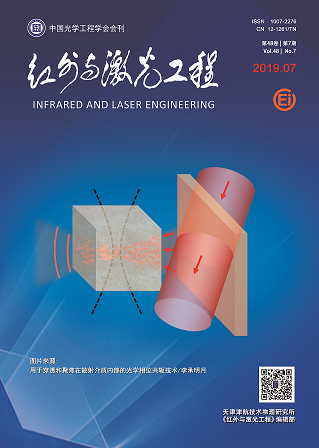|
[1]
|
Song Xuyao. Research on infrared radiation characteristics of high-emissivity coating[D]. Changchun:Changchun University of Science and Technology, 2015. (in Chinese) |
|
[2]
|
Yuan Liang, Zhan Chunlian, Li Yan, et al. Testing technology of spectral radiance of infrared target[J]. Infrared and Laser Engineering, 2015, 44(12):3807-3811. (in Chinese) |
|
[3]
|
Zhao Anxin, Tang Xiaojun, Zhang Zhonghua, et al. Influence analysis of Rubberband's piecewise quantity on baseline correction effect[J]. Infrared and Laser Engineering, 2015, 44(4):1172-1177. (in Chinese) |
|
[4]
|
Liu Zhiming, Gao Minguang, Liu Wenqing, et al. Study on the method of FTIR spectrum non linear multiple point calibration[J]. Spectroscopy and Spectral Analysis, 2008, 28(9):2077-2080. (in Chinese) |
|
[5]
|
Hanssen L, Mekhontsev S, Khromchenko V. Infrared spectral emissivity characterization facility at NIST[C]//SPIE, 2004, 5404:1-12. |
|
[6]
|
Liu Peng, Wang Peigang, Hua Jianwen, et al. Spectral calibration and ILS measurement of fourier transform spectrometer[J]. Science Technology and Engineering, 2007, 7(17):4408-4411. (in Chinese) |
|
[7]
|
Paine S. Processing and calibration of submillimeter fourier transform radiometer spectra from the RHUBC-Ⅱ campaign[J]. IEEE Transactions on Geoscience and Remote Sensing, 2013, 51(12):5787-5798. |
|
[8]
|
Feng Mingchun, Xu Liang, Gao Minguang, et al. Study of radiometric calibration methods on FTIR spectrometer[J]. Infrared Technology, 2012, 34(6):366-370. (in Chinese) |
|
[9]
|
Zhao Yunlong, Dong Wei, Huan Kewei, et al. The calibration of the spectral responsivity of the fiber optical spectrometer based on high temperature blackbody[J]. Acta Metrologica Sinica, 2015, 36(6A):83-86. (in Chinese) |
|
[10]
|
Tank V, Lindermeir E, Dietl H. Calibration of a fourier transform spectrometer using three black body sources:proceeding of 8th international conference on fourier transform spectroscopy[C]//SPIE, 1991, 1575:241-243. |
|
[11]
|
Yang Minzhu, Zou Yaopu, Zhang Lei, et al. Nonlinear effects of the Fourier transform spectrometer detector and its correction[J]. Infrared and Laser Engineering, 2017, 46(10):1023001. (in Chinese) |
|
[12]
|
Wang Zongwei, Dai Jingmin, He Xiaowa, et al. The linearity analysis of ultrahigh temperature FTIR spectral emissivity measurement system[J]. Spectroscopy and Spectral Analysis, 2012, 32(2):313-316. (in Chinese) |
|
[13]
|
Zhao Yunlong. Experimental study on spectral emissivity measurement of high temperature materials[D]. Changchun:Changchun University of Science and Technology, 2017. (in Chinese) |









 DownLoad:
DownLoad: